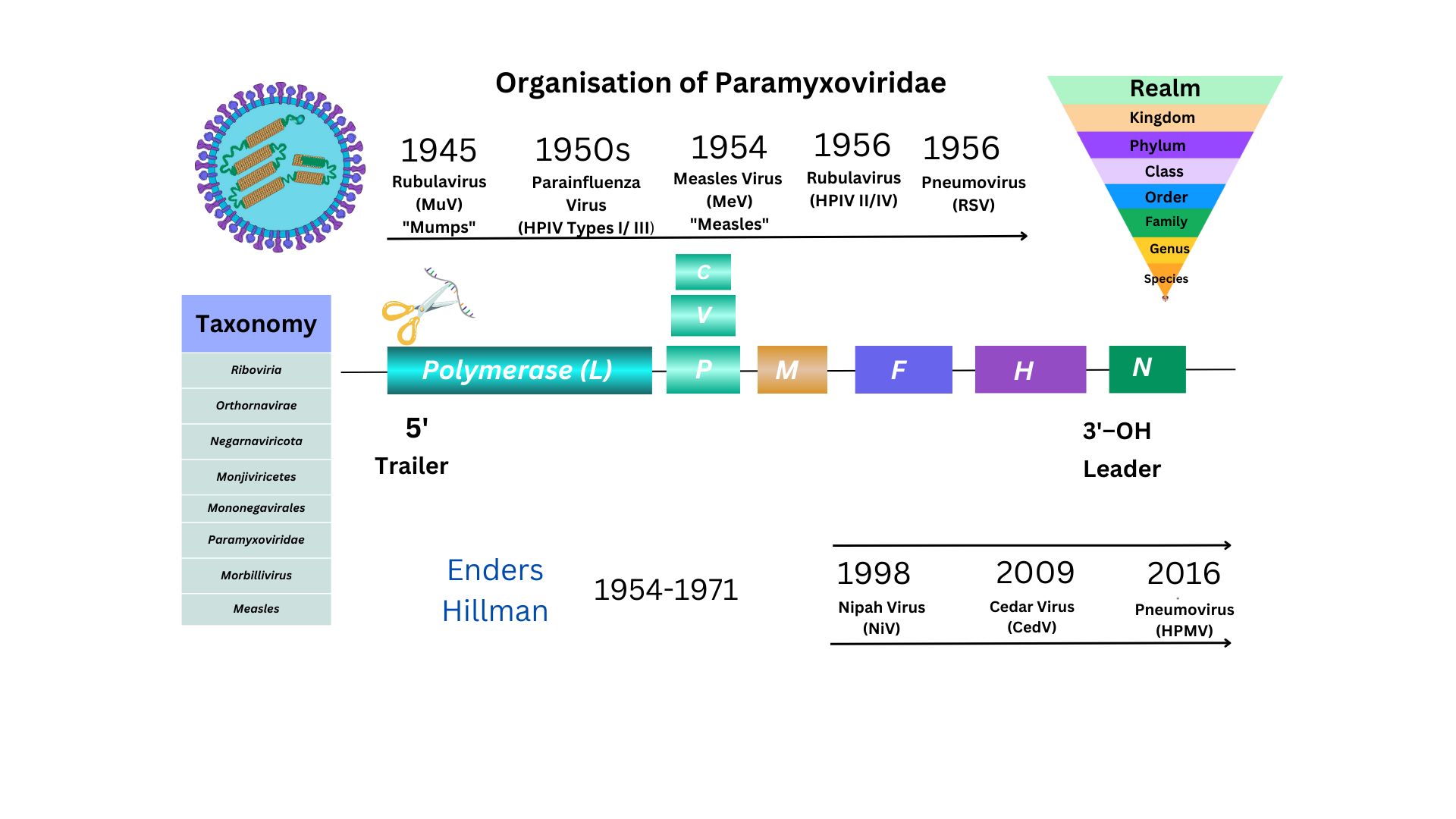Measles Immunology and Infection
Measles is a virus (MeV) causal of measles disease, thought to have existed at least 4000 years ago, affecting predominantly infants, but also immunocompromised individuals and others remaining a public health issue today. The causal virion is defined biologically within the taxonomical system by order Mononegavirales, family Paramyxoviridae, genus Morbillivirus and species Measles Morbillivirus. Similar to other viral infections, MeV is an airborne infection, with the virion composed of an RNA genome code encoding for eight predominant proteins observed only in humans. The first isolation of MeV occurred in 1954, known as the “Edmonston strain” from David Edmonston, a student at Fay School in Boston which led to the first measles vaccine. The genomic stability of the MeV particle is suggestive that the third pathogen with the potential to be eradicated requires further biological and immunological clarification. Natural virus infection mechanisms throughout historical biological development and research can be contextualised further examining how immunisation nearly led to measles near eradication.
For full peer reviewed article details: [Short Communication] Immunology of a Morbillivirus: Measles 1954 to 2023 - Article (Preprint v3) by Brent Brown | Qeios
